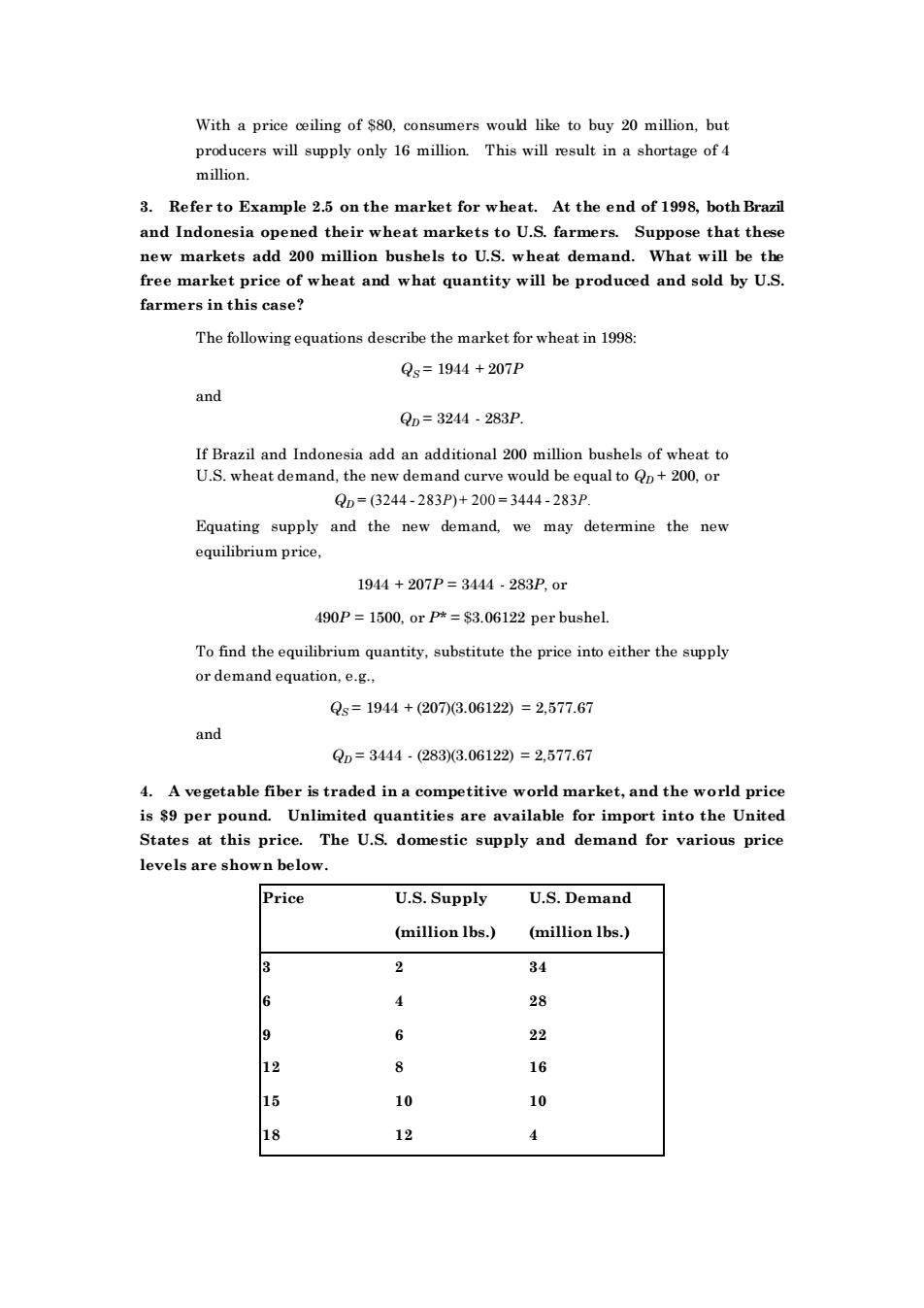正在加载图片...

With a price ceiling of $80,consumers would like to buy 20 million,but producera will auppy.This will eu inashortage of million 3.Refer to Example 2.5 on the market for wheat.At the end of 1998 both Brazil and Indonesia opened their wheat markets to U.S.farmers.Suppose that these new markets add 200 million bushels to U.S.wheat demand.What will be the free market price of wheat and what quantity will be produced and sold by U.S. farmers in this case? The following equations describe the market for wheat in 1998: Qs=194+207P and Qm=3244283P If Brazil and Indonesia add an additional 200 million bushels of wheat to U.S.wheat demand,the new demand curve would be equal to +200.or Q=(6244-283P)+200=3444-283P, Equating supply and the new demand,we may determine the nev equilibrium price. 1944+207P=3444-283P,0r 490P=1500.or P*=$3.06122 per bushel To find the equilibrium quantity,substitute the price into either the supply or demand equation,e.g., Qg=1944+(2073.06122=2,577.67 and QD=3444.(2833.06122=2,577.67 4.A vegetable fiber is traded in a competitive world market,and the world price is $9 per und.Unlimited are available for rt into the United States at this price. The U.S.domestic supply and demand for various price levels are shown below. Price U.S.Supply U.S.Demand (million lbs.) (million lbs.) 34 28 6 22 16 10 10 12With a price ceiling of $80, consumers would like to buy 20 million, but producers will supply only 16 million. This will result in a shortage of 4 million. 3. Refer to Example 2.5 on the market for wheat. At the end of 1998, both Brazil and Indonesia opened their wheat markets to U.S. farmers. Suppose that these new markets add 200 million bushels to U.S. wheat demand. What will be the free market price of wheat and what quantity will be produced and sold by U.S. farmers in this case? The following equations describe the market for wheat in 1998: QS = 1944 + 207P and QD = 3244 - 283P. If Brazil and Indonesia add an additional 200 million bushels of wheat to U.S. wheat demand, the new demand curve would be equal to QD + 200, or QD = (3244 - 283P) + 200 = 3444 - 283P. Equating supply and the new demand, we may determine the new equilibrium price, 1944 + 207P = 3444 - 283P, or 490P = 1500, or P* = $3.06122 per bushel. To find the equilibrium quantity, substitute the price into either the supply or demand equation, e.g., QS = 1944 + (207)(3.06122) = 2,577.67 and QD = 3444 - (283)(3.06122) = 2,577.67 4. A vegetable fiber is traded in a competitive world market, and the world price is $9 per pound. Unlimited quantities are available for import into the United States at this price. The U.S. domestic supply and demand for various price levels are shown below. Price U.S. Supply U.S. Demand (million lbs.) (million lbs.) 3 2 34 6 4 28 9 6 22 12 8 16 15 10 10 18 12 4